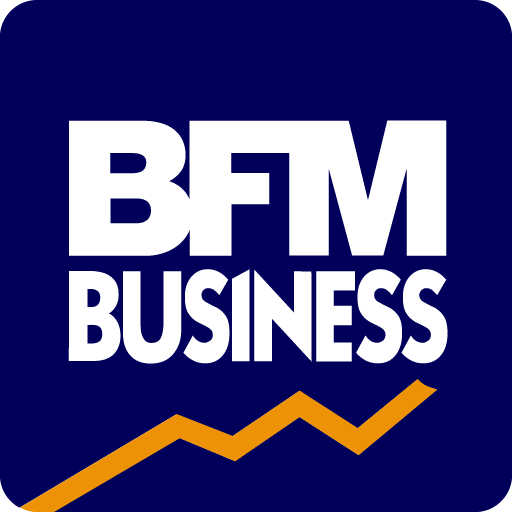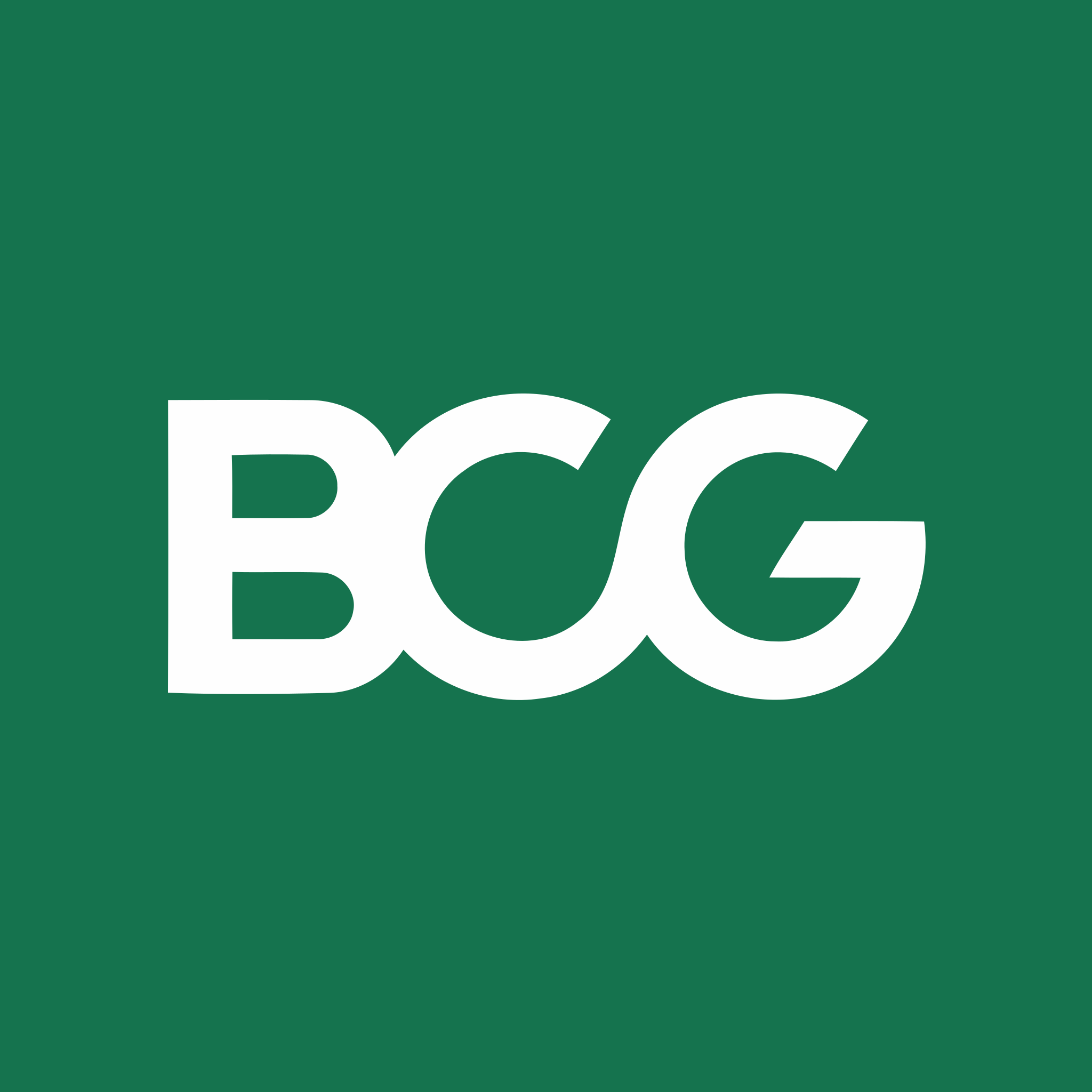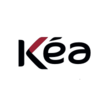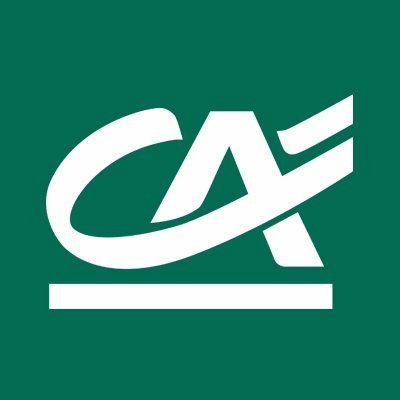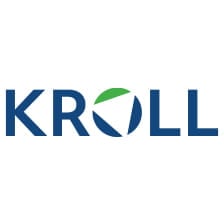Summary of our market study
The French HVAC market is estimated to be worth 7.4 billion euros by 2022.
The global HVAC market is valued at around $140 billion, with an average annual growth rate of 6%.
The French market will double in size between 2015 and 2022.
Cooling is the dominant segment, with 55% of the market.
Growth in the French market stems mainly from renewable energy consumption in the heating sector, which rose by 82% between 2006 and 2021, with wood-energy predominating (63%).
Regulation plays a key role, with eco-loans and other government incentives encouraging the adoption of cleaner, more energy-efficient HVAC systems. The number of eco-loans granted for renewable energy heating systems reached 61,034 in 2021.
The residential sector benefits from government schemes such as "Un coup de pouce pour les économies d'énergie", MaPrimeRenov, and zero-rate eco-loans. Between 2016 and 2021, the number of eco-loans granted rose by 45%.
The public sector is supported by the decree on the renovation of tertiary buildings, which aims to reduce energy consumption by 60% by 2050
The main market players range from generalists like the Vinci Group and Bouygues Construction to specialist companies like Daikin.
A large proportion of sales in the HVAC market come from maintenance and retrofit activities, which account for almost 70% of the market. The remainder is attributed to new construction.
HVAC companies are mainly concentrated in the south and north-east of France, and the Paris region.
Several key players have established a strong presence
- Dalkia, known for its comprehensive energy services
- Engie, formerly GDF Suez, is a global energy player and an expert in the heating, ventilation and air-conditioning sector.
- Spie is an independent European leader in multi-technical services.
- CDL Elec is a major distributor of electrical equipment and heating, ventilation and air-conditioning systems.
- Vinci: Its expertise naturally extends to heating, ventilation and air-conditioning systems.
- Eiffage, a major construction company, extends its services to heating, ventilation and air conditioning.
- Bouygues Construction brings innovation and sustainability to its projects.
- Climat de l'air, Idex, Snef, Patricola and MCI offer customized HVAC solutions
to understand this market
Detailed content of our market study
 Inforamtion
Inforamtion
- Number of pages : 35 pages
- Format : Digital and PDF versions
- Last update :
 Summary and extracts
Summary and extracts
1 Market overview
1.1 Overview and definition of the HVAC market
The HVAC market in France is currently at the crossroads of several major transitions: energy transition, digitalization of equipment and economic tensions over purchasing power. These dynamics are rapidly reshaping the contours of a sector historically focused on thermal comfort, but now at the heart of environmental performance strategies.
In France, the sector is undergoing a major restructuring. On the one hand, air conditioning is becoming a versatile, increasingly reversible piece of equipment, blurring the boundary with aerothermal heat pumps, which have themselves become standard in high-performance renovations. On the other hand, heating remains the main household energy consumption item, accounting for 62% of energy used in 2024, but it is under double pressure: budgetary (41% of French people say they have had to limit heating, according to IFOP) and regulatory (gradual phase-out of fossil equipment, RE2020/2025 requirements).
Dynamic demand is real: in the first half of 2024, 37,120 air/water heat pumps and 33,690 pellet stoves were installed, according to ANAH data. These figures reflect the success of public schemes such as MaPrimeRénov', reduced VAT or the eco-PTZ, which enabled more than 105,000 projects to be financed in 2023.
However, this shift is accompanied by a weakening of the French industrial fabric, particularly in the air-conditioning segment: national production has fallen from 2.7 billion euros in 2018 to 217 million in 2023, a drop of over 90% (Eurostat). France has thus become structurally dependent on Asian imports to meet growing demand for thermal equipment.
Nevertheless, the French market remains buoyant, with 24 billion euros worth of work carried out in the heating and air-conditioning sector in 2023 (+10% in one year). It relies on a dense network of companies, concentrated in the most urbanized regions: Île-de-France (24.1% of the sector's workforce), Auvergne-Rhône-Alpes and Hauts-de-France, revealing major hubs of activity but also potential for development in less-served territories.
Finally, the regulatory framework provides structure to the entire sector. The tertiary sector decree requires a 40% reduction in the energy consumption of tertiary buildings by 2030, while the European european F-Gas regulation, effective in 2025, bans the use of refrigerants with a high global warming potential (GWP ≥ 750). These texts accelerate the spread of alternative fluids (R32, CO₂, propane, ammonia) and encourageproduct innovation.
In short, the French HVAC market is entering a phase of rapid change, driven by environmental imperatives, technological opportunities and socio-economic constraints. It represents a strategic lever for both manufacturers and installers, at a time when energy savings, thermal comfort and indoor air quality are becoming societal priorities.
1.2 The global HVAC market
The global HVAC services market is booming. Estimated at USD **.* billion in ****, it should reach USD ***.* billion by ****, representing average annual growth of *.**% (***). This dynamic is fuelled by several structural factors:intensifying demand for air conditioning, growth in the construction sector in emerging countries, as well as technological advances integratingIoT,AI or even intelligent energy optimization systems.
HVAC market sales trend World, ****-****, in billions USD Source: ****
Today, cooling accounts for the majority of uses in the global market (***). This imbalance reflects the growing adoption of air conditioners, particularly in high-heat areas and modernized office buildings.
Several political and industrial initiatives support this trajectory. for example, the partnership between Tata Power and **F Smart Innovations India illustrates the shift towards connected, energy-efficient buildings. Similarly, the European Green Deal is encouraging the thermal renovation of residential buildings, with tax incentives such as the Italian Superbonus (***).
Finally, climate trends and rising global temperatures are increasing the pressure to guarantee thermal comfort in buildings. The rise of heat pumps, supported by plans such as REPowerEU, and residential decarbonization objectives, make them a strong driver of growth in the global HVAC services market for years to come.
Market breakdown by use World, ****, in Grand View ...
1.3 HVAC engineering in France: a sector linked to construction and changing regulations
HVAC engineering, which covers the installation and maintenance of heating and air-conditioning equipment (***). Market for heating and air-conditioning equipment (***) France, ****-****, in billions of euros Source: ****
This dynamic is also reflected in equipment sales volumes in ****. Hot-water radiators and convectors remain the most widely distributed devices, with over *.* million units sold, ahead of air/air furnaces (***), could see their sales slow down under the impact of incentives to move away from fossil fuels.
Source: ****
The HVAC sector is therefore at the crossroads of the construction industry, public energy renovation policies and technological innovation. Its growth depends on a dynamic real estate market, evolving environmental standards, and the ability of professionals to support households and businesses in their choice of equipment.
2 Demand analysis
2.1 Renovation maintenance supports the sector
The slowdown in new housing construction is clearly confirmed in France. In ****, only ***,*** housing units were started, compared with ***,*** in ****, a drop of almost **% in three years. The number of building permits follows a similar trajectory, dropping from ***,*** in **** to ***,*** in ****. This drop will have a direct impact on demand for heating and air-conditioning equipment in the new-build sector. It is forcing companies to reposition themselves in maintenance, servicing and, above all, energy renovation, a segment where demand remains structurally high.
Growth in the number of housing construction sites France, ****-****, in units Source: ****
The dynamics of existing home sales also reflect this refocusing on existing homes. After peaking at *.** million sales in ****, the older housing market will experience a steady contraction, reaching ***,*** transactions in ****. This downturn, although cyclical, reinforces the logic of enhancing the value of existing stock. Owners delaying their sale plans are investing more in renovating their property, particularly in heating and air conditioning to improve energy efficiency.
Trend in sales of existing homes France, ****-*****, by units sold **** : (***) Source: ****
This trend is corroborated by the evolution of transactions over a sliding **-month period. The number of sales of older homes fell from *.* million in Q* **** to just ...
2.2 Data centers: a powerful driver of future demand
The dynamics surrounding artificial intelligence are reshaping the contours of energy demand, with a direct impact on the need for thermal and HVAC equipment. France intends to position itself as the promised land of data centers in Europe, buoyed by the *** billion euros of private investment, both French and foreign, announced by Emmanuel Macron in February **** at the Summit for Action on Artificial Intelligence. Much of this funding is aimed at supporting the development of these energy-intensive infrastructures, now considered strategic.
This trend is underpinned by several of France's structural assets:
**% of mainland France is now covered by fiber optics, enabling ultra-fast communication between data centers. The network is extremely reliable, with outages lasting more than three minutes occurring less than once every ten years.
The development of these centers requires considerable surface area. According to CBRE, a data center with an average capacity of ** to *** MW requires between * and * hectares. This demand for land is putting pressure on certain areas, particularly around major ports and airports, where security and natural hazard constraints limit the available supply.
But it's above all the structuring of construction sites that marks a profound change. According to an EY study for France Data Center, ...
2.3 The French and air conditioning
When it comes to hot weather, the French prefer simple solutions to cool off before resorting to air conditioning. According to the June **** Airton - YouGov Barometer, **% of respondents believe that closing windows in the morning is the most effective way of keeping cool, far ahead of wearing light clothing (***) remain in the minority, reflecting a search for sobriety and low-cost solutions.
Best way to cool down France, ****, in Source: ****
When asked about the most economical cooling system, the French have a relatively balanced perception. **% consider air conditioners to be the most economical system, ahead of misters (***). However, **% mentionother systems and **% admit they don't know, reflecting a lack of consensus and uncertainty about the actual running costs of equipment.
Most economical cooling system France, ****, in Source: ****
When choosing an air-conditioning system, cost appears to be the most important criterion for **% of French people, ahead ofenergy efficiency (***) are also taken into account, but in a secondary manner.Aesthetics were a determining factor for only **% of respondents, confirming that air conditioning is perceived above all as a functional rather than an aesthetic purchase.
Main criteria when buying an air-conditioning system France, ****, in Source: ****
In terms of budget, **% of French people say they plan ...
2.4 The development of renewable heating
Faced with rising energy prices, more and more people are making budgetary choices when it comes to heating their homes. in ****, **% of French people said they had already given up heating their home for economic reasons, a higher rate than for giving up using their car (***). This figure testifies to a growing social issue and an urgent need for more affordable, sustainable alternatives. Heating is becoming a critical item of expenditure, and the use of energy-saving and renewable devices is becoming central to maintaining comfort while limiting costs.
Renunciations linked to energy bills France, ****, in Source: ****
Against this backdrop, wood remains the heating solution of choice for many households. In ****, **% of French people will use it as their main heating method, and **% as an auxiliary source of heat. If we add to this the use of wood for leisure purposes, more than a third of households use it (***). These figures confirm the importance of wood in the residential energy mix, particularly in rural and peri-urban areas, where it remains one of the only low-cost, low-carbon heating options.
Use of individual wood heating France, ****, in Source: ****
However, households are well aware of the environmental issues associated with this growing use of wood. ...
2.5 Indoor air quality: a growing challenge for air conditioner users
Indoor air pollution is now perceived as a real nuisance by a significant proportion of the French population. According to the ADEME **** barometer, **% of respondents say they feel the effects "sometimes" and *% "often", while **% say they rarely feel them. However, **% of French people say they have never been bothered. This shared perception underlines the fact that, while indoor pollution is not universally felt, it remains a source of discomfort for a significant proportion of the population.
Perception of discomfort linked to indoor air pollution France, ****, in Source: ****
When it comes to identifying the causes of outdoor air pollution, the French overwhelmingly point to road traffic(***). This ranking shows that the main environmental concerns remain focused on visible, everyday mass emissions, fuelling a heightened sensitivity to the air we breathe.
Perceived sources of outdoor air pollution France, ****, in Source: ****
In terms of health, air pollution is perceived as a serious threat. **% of French people believe that air pollution has a major impact on health, and **% consider its impact to be moderate, compared with just *% who think it has no effect at all. This strong consensus on public health risks justifies the growing interest in solutions to improve indoor air quality, such as ...
3 Market structure
3.1 Market value chain
According to the Bouygues Energie website, the HVAC value chain has four main components
Large companies supervise work for the public and corporate sectors. They can draw on their complementary activities and strong geographical coverage. Smaller companies focus on work and maintenance for private customers.
3.2 A weakened manufacturing base in France, concentrated in a few European countries
The analysis of the European production structure in the air conditioning sector is based on the aggregation of three PRODCOM codes that are particularly representative of the systems used in buildings:
******** for wall-mounted or window-mounted systems (***), ******** for machines with refrigeration units (***), ******** for systems without integrated units (***).These three lines cover most of the configurations found in the residential and commercial sectors.
In France, the industrial dynamic is clearly in decline. National production, which exceeded *.* billion euros in ****, has collapsed to *** million euros in ****, a drop of over **% in five years. This massive decline reflects a structural setback: loss of competitiveness, offshoring, but also an upmarket shift abroad that is not being followed locally. However, France still ranks *th in Europe, proof that the industrial base has not totally disappeared.
French production of air-conditioning machines France, ****-****, in thousands of euros Source: ****
across the EU, global production of air conditioners for buildings reached *.*** billion euros in ****. Seven countries account for the overwhelming majority of this value. Germany leads the way with over *** million euros, followed by Italy (***), Finland, Spain, the Netherlands and France. Together, these seven countries account for **.*% of European production, indicating a very high geographical concentration of supply, to ...
3.3 A booming but geographically concentrated distribution and installation sector
At the same time, the number of employees in sector **.**B is rising sharply, with ***,*** employees in **** compared to***,*** in ****. This development reflects a growing need for skilled labor, driven by the massive scale of renovation projects and public support for the energy transition. It also reveals a sector under pressure, where training and attractiveness are key issues.
Number of establishments registered under activity **.**B France, ****-**** source: ACOSS
Geographically, Île-de-France stands out with **,*** employees, topping the national ranking. It is followed by Auvergne-Rhône-Alpes (***). This concentration reflects the strong demand for renovation in urban and suburban areas, where old housing is plentiful and public policies are more incentive-based.
Workforce registered under activity **.**B France, ****-**** source: ACOSS
Regional data confirms these disparities: Île-de-France accounts for **.*% of the sector's workforce, followed by Auvergne-Rhône-Alpes (***) appear under-represented, revealing the potential for growth in less densely populated areas.
Lastly, these regional dynamics need to be put into perspective with the market shares of the various equipment categories, where heating still predominates. The growth of the CMV sector, albeit slow, is in line with the trend towards higher quality installations, driven by environmental regulations and the quest for better indoor air quality.
Region Number ...
3.4 Distribution channels
The distribution of heating and air-conditioning equipment in France is based on a multi-channel structure, combining general building distributors, specialized HVAC platforms and installer-integrators. For a company focused on technical solutions for the commercial, industrial and residential sectors, several types of intermediaries can be mobilized.
*.specialized HVAC distributors
Specialist HVAC wholesalers and platforms are a key channel for accessing the market, particularly in the industrial and commercial sectors. They often have technical catalogs, a network of partner installers and a national presence.
Batiproduits(***): French reference directory for building and civil engineering products and suppliers. It enables you to reference a range of products, and gain visibility with design offices and specifiers. ExpoPermanente(***).
*.multi-product B*B platforms
Generalist professional marketplaces such as HelloPro(***) can rapidly generate qualified leads, thanks to detailed product sheets and direct contact with public and private buyers.
*.installers and thermal engineering firms
The French market is dominated by installers/integrators, who act as both specifiers and operators. Forging partnerships with these players is essential for calls for tender and customized projects.
Thermiciens.fr(***): technical directory of design offices and building heating specialists. Synasav(***): an association of after-sales service professionals, including many installers specialized in industrial ...
3.5 Industry events: the must-attend events for HVAC engineering in France in 2025
The French HVAC market is structured around a number of major trade shows, which are key meeting points for manufacturers, specifiers and installers. These events provide an opportunity to showcase new products, keep abreast of the latest regulatory trends (***) and identify business opportunities in the tertiary, industrial and residential sectors.
Among the most strategic trade shows in ****:
Interclima(***)The benchmark event for heating, ventilation, air conditioning and low-carbon solutions. It brings together the building industry's leading manufacturers and decision-makers to discuss energy efficiency. BePOSITIVE(***)Dedicated to the energy transition in the building industry. This show highlights renewable technologies, hybrid systems and connected innovations. In particular, it targets the tertiary and local authority markets. Salon Bois Énergie (***)Focused on biomass solutions. It attracts public contracting authorities, industrial operators and local authorities committed to the decarbonization of heating. IBS - Intelligent Building Systems(***)Specializing in intelligent building management technologies. A relevant event for players positioned in connected systems and smart thermal control. Artibat(***)Although general in scope, this building show brings together a large number of installers and SMEs in the technical finishing sector, particularly on the west coast of France.
These events take place against a backdrop of far-reaching change in the ...
4 Offer analysis
4.1 Offer typology
The HVAC market is characterized by a varied and constantly evolving offering, at the crossroads of thermal performance, health issues and environmental constraints. While traditional systems still dominate, the market is moving upmarket with hybrid, connected and more energy-efficient solutions.
In ****, hot water radiators and convectors will still account for almost **% of HVAC equipment sales in France. They are followed by :
air-to-air generators: **.*%, air-to-water heat pumps: **.*%.
Breakdown of HVAC equipment sales France, ****, in Source: ****
conversely, biomass boilers and solar thermal systems remain marginal, although they are growing slightly. These figures testify to a market that is still structured around conventional heating, but which is undergoing a dynamic transition towards more sustainable equipment.
The heat pump (***) segment in particular illustrates this transformation. By ****:
air-source heat pumps will account for **.*% of total sales volume, water-source heat pumps: **.*%, thermodynamic water heaters: **.*%, geothermal heat pumps: *.***%.
This success is based on their reversibility, their suitability for public subsidies (***) and their adaptability to renovation projects. They are becoming a residential standard, particularly in projects to decarbonize heating systems.
Breakdown of heat pump volumes France, ****, in Source: ****
But beyond thermal comfort, indoor air quality is becoming a major new requirement, turning ventilation into an innovation lever for ...
4.2 Price trends and the quality challenge for installers
Heating generator prices
There are a number of heating generators using different sources of supply, the prices of which have been estimated by Quelleénergie.fr, an online energy-saving advice service:
The air-to-air heat pump, which extracts thermal energy from the outside air and releases it into the house or apartment via a fan coil unit, costs between €*,*** and €**,***. The air-to-water heat pump uses the same principle, but rejects the heat into water. It costs around €**,***. The geothermal heat pump extracts thermal energy from the ground via a collection network or a borehole and transmits it to the central heating system, and costs around €**,***. The low-temperature gas boiler is less expensive than a condensing boiler, costing between €*,*** and €*,***. It offers savings of up to **% compared with a conventional gas boiler. The condensing gas boiler is similar to a conventional boiler, except that it extracts more energy from the combustion of town gas. Prices range from €*,*** to €*,***. The wood pellet boiler uses recompacted wood as fuel. It costs around €**,***. A pellet stove costs between €*,*** and €*,***. Electric inertia radiators cost between €*** and €*,***.
Median prices for heating systems
Source: ****
Consumer price index for heating and air-conditioning appliances France, ****-****, base *** in **** Source: ****
4.3 New supply trends: connected heating at the heart of the transition
The development of connected heating is one of the most significant developments in the HVAC market. This movement, long driven by private innovation and comfort considerations, is now taking on a regulatory dimension, with a direct impact on manufacturers, installers and consumers.
According to decree no. ****-*** of June *, ****, all residential and commercial buildings, both old and new, must be equipped with a programmable or connected thermostat by January *, ****. The aim of this obligation is to introduce room-by-room temperature control, in order to reduce energy consumption in homes. It extends existing provisions, such as the obligation to install programmers when replacing a boiler since ****, but extends it to all existing housing stock, representing over ** million homes ultimately concerned.
This regulatory shift is part of the Energy Sobriety Plan, launched in **** in response to the energy crisis. In particular, it stipulates that "the obligation to install a boiler programmer by **** in all new residential buildings will be extended to all commercial buildings.sidential buildings will be extended to all buildings", but it was the date of **** that was retained in the final decree.
The objectives are clear: to enable households to better control their consumption, particularly during absences, and thus achieve energy ...
4.4 Supply trend: hybridization of heating systems
Faced with the need to reduce CO₂ emissions and ensure continuity of thermal comfort, thehybridization of heating systems is emerging as a solution of the future in the residential and tertiary sectors.
In concrete terms, these systems combine a heat pump (***) - often powered by electricity - with a gas or oil condensing boiler. Thanks to an intelligent control system, the unit automatically selects the most appropriate energy according to outdoor temperature, peak consumption or energy costs. The heat pump operates as a base load, while the boiler takes over when it's really cold. This combination saves up to **% on energy bills, while significantly reducing CO₂ emissions. [***]
Manufacturers get involved:
Buderus offers " Add-on " hybrid systems, which can be added to an existing boiler, or " All-in-one " systems, which are compact and suitable for heavy renovations. Elco, for its part, is targeting the tertiary sector with pairings such as the AEROTOP EVO heat pump and the TRIGON L PLUS boiler, guaranteeing performance, silence and compliance with the tertiary sector decree. [***] According to France Info (***), nearly **,*** hybrid boilers were installed in France in ****, a figure that could increase tenfold within five years.
In addition to performance, hybridization also appeals for its installation flexibility (***), compatibility ...
4.5 A disruptive offering driven by geothermal innovation and artificial intelligence
The rise of hybrid solutions combining local renewable energy, intelligent sensors and algorithms illustrates the growing popularity of a new generation of heating and air conditioning systems that are more economical and adaptable. French start-up Accenta stands out as an emblematic example of this dynamic.
Founded in **** and spun out of the École Polytechnique gas pedal, Accenta is developing a system of geostorage system for commercial buildings and multi-family housing . The solution is based on three pillars:
a real-time energy monitoring platform, fed by sensors installed in the building ; predictive analysis software, which adjusts heating and cooling requirements according to usage, climatic trends and ageing insulation; a geothermal heat pump, coupled to a network of vertical probes up to *** m deep, to capture or release energy depending on the season.
The system can reduce energy consumption by ** to **%, and up to **% of emissions. cO₂ emissions, at a cost claimed to be up to ** times lower than standard market alternatives.
Deployed on * million m² under management, the solution is already winning over several major refences (***) and is expanding into high-potential markets such as China.
Accenta is now moving towards an integrated financing model: rather than selling the technology, the start-up directly finances ...
5 Regulations
5.1 Heating regulations: towards a more sober, efficient and low-carbon offer
Heating regulations in France are changing rapidly under the combined impact of the energy transition, the climate crisis and tensions on the energy market. These changes are having a profound impact on the supply side, both in terms of technology and market dynamics. There are three main thrusts to this framework: thermal standards for buildings, equipment requirements and incentives.
Increasing regulation of new buildings
RT****, still in force for certain projects until ****, laid the foundations for a BBC (***). This requirement was reinforced by the E+C- labels, introduced in ****, combining four levels of energy performance and two levels of carbon impact.
Since then, the RE**** environmental regulation has become the norm, before being tightened up by the RE****, applicable from July ****:[***]
Ban on gas-fired heating in new apartment buildings; Obligation to use renewable energies for heating (***); Mandatory use oflow-carbon materials (***); Triple glazing mandatory in certain zones; Additional costs estimated at between *% and **% for new buildings, ultimately offset by energy savings.
Obligations extended to existing buildings
Decree no. ****-*** of June *, **** requires, as of January *ᵉʳ, ****, the installation of a programmable or connected thermostat in all buildings, new and old alike. This control system must enable automatic control by room, with a minimum ...
5.2 Increasingly stringent regulations for the air-conditioning sector
The air-conditioning sector is now at the heart of regulatory priorities in terms of energy efficiency and environmental transition. This development is framed by two main components: energy efficiency targets for tertiary buildings and specific regulations on refrigerants.
The July **** tertiary sector decree imposes a trajectory for reducing final energy consumption in tertiary sector buildings over *,*** m². The targets are progressive:
-**% by ****, -**% by ****, -**% by ****.
The decree covers a huge building stock: *** million m², **% of which is over *,*** m². It requires property owners to declare their energy consumption on the OPERAT platform, taking into account any changes in use (***).
At the same time, the European climate target calls for an **% reduction in greenhouse gas emissions by **** (***). This has a direct impact on air conditioning via the F-Gas regulation: from ****, the use of refrigerants with a GWP greater than or equal to *** will be banned. This is driving the adoption of :
replacement fluids such as R** (***), or natural fluids such as CO₂ (***).
However, these alternatives involve new safety issues, as some fluids are flammable or toxic, and require standards to be adapted.
To meet these requirements, innovative solutions are emerging. For example
Carrefour Property deploys adiabatic modules (***) that consume *.* kWh ...
6 Positioning the players
6.1 Segmentation
6.2 The analyst's eye
Context
The HVAC (***) market in France today finds itself at the crossroads of several structuring dynamics: energy pressure on households, regulatory acceleration, increasing health requirements and the transition to more energy-efficient technologies. It combines strong economic trade-offs with increasingly marked qualitative expectations. An analysis of behavior, sales figures and industrial change reveals several underlying trends.
Major trends:
trend *: Budgetary pressures influence trade-offs
Rising energy costs are forcing households to make choices: **% of French people gave up heating their homes "often" or "from time to time" in ****. When it comes to air-conditioning, cost remains the main obstacle, cited even before environmental considerations. This budgetary context tends to slow down impulsive purchases and steer decisions towards more economical or subsidized solutions, such as pellet stoves or air/water heat pumps.
trend *: A gradual transition to greener equipment
Heat pumps (***), with **,*** installations by ****, also illustrate this intermediate transition.
trend *: Strong structuring around urban areas
The HVAC sector is highly polarized territorially. Thermal and air-conditioning equipment work is heavily concentrated in the Île-de-France (***) regions, where demand for thermal renovation is particularly strong. This concentration also reflects the logic of the market: the majority of needs are located in densely populated areas, subject to stricter regulatory ...
- Dalkia
- CDL Elec
- Vinci Groupe
- Eiffage Groupe
- Bouygues Construction
- Daikin (France)
- Climater Groupe
- Air Climat
- Snef
- Patricola
- MCI
- INEO (Engie Energie Service)
- Jimmy Energy
- F2A
- Eiffage Énergie Systèmes
- Vinci Energies
- Axima Concept (Engie)
- Suez Groupe
- Axenergie
- CEME Groupe
- Idex
- Airwell (Systemair Groupe)
- Joncoux Sphering Groupe
All our studies are available online in PDF format
Take a look at an example of our research on another market!
 Choosing this study means :
Choosing this study means :
Access to more than 35 hours of work
Our studies are the result of over 35 hours of research and analysis. Using our studies allows you to devote more time and added value to your projects.
Benefit from 6 years' experience and over 1,500 industry reports already produced
Our expertise enables us to produce comprehensive studies in all sectors, including niche and emerging markets.
Our know-how and methodology enable us to produce reports that offer unique value for money.
Access to several thousand articles and paid-for data
Businesscoot has access to all the paid economic press as well as exclusive databases to carry out its market research (over 30,000 articles and private sources).
To enhance our research, our analysts also use web indicators (semrush, trends, etc.) to identify market trends and company strategies. (Consult our paying sources)
Guaranteed support after your purchase
A team dedicated to after-sales service, to guarantee you a high level of satisfaction. +44 238 097 0676
A digital format designed for our users
Not only do you have access to a PDF, but also to a digital version designed for our customers. This version gives you access to sources, data in Excel format and graphics. The content of the study can therefore be easily retrieved and adapted for your specific needs.
 Our offers :
Our offers :
the HVAC market | France
- What are the figures on the size and growth of the market?
- What is driving the growth of the market and its evolution?
- What is the positioning of companies in the value chain?
- Data from several dozen databases
Pack 5 études (-25%) France
- 5 études au prix de 74 €HT par étude à choisir parmi nos 1200 titres sur le catalogue
- Conservez -25% sur les études supplémentaires achetées
- Choisissez le remboursement des crédits non consommés au terme des 12 mois (durée du pack)
Consultez notre catalogue d’études sectorielles











